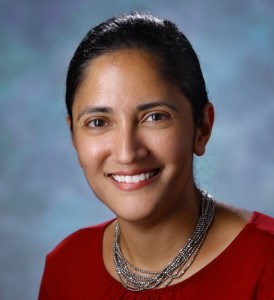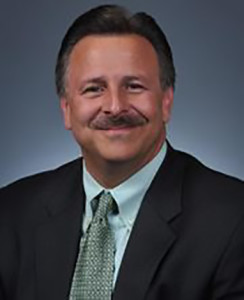AJMC study shows ACOs that allocate majority of shared savings to primary care providers are more likely to generate savings
When it came time to pay bonuses to Medicare’s Pioneer ACOs and Shared Savings Program (MSSP) ACOs based on 2014 results, a substantial proportion of the payments went to primary care physicians compared to hospitals and specialist physicians. Significantly, only a minority of these ACOs qualified for bonus payments.
Pathologists and clinical laboratory managers watching the growth of ACOs will find it notable that primary care doctors received 46% of the shared-savings bonuses in the program’s first two years. Hospitals received 27% of the incentives while 20% went to specialists, according to a Modern Healthcare report.
High Expectations That ACOs Can Help Control Healthcare Costs
Twenty Pioneer ACOs and 333 Medicare’s Shared Savings Program (MSSP) ACOs combined to produce more than $411 million in total savings in 2014, although only 29% of the organizations generated enough savings to earn a bonus, a CMS Fact Sheet indicated.
“These results show that accountable care organizations as a group are on the path towards transforming how care is provided,” stated CMS Acting Administrator Andy Slavitt in a statement. “Many of these ACOs are demonstrating that they can deliver a higher level of coordinated care that leads to healthier people and smarter spending.”
According to CMS, 92 of the 333 MSSP ACOs combined to hold spending $806 million below their targets. These ACOs earned performance payments of more than $341 million as their share of program savings.
Among the 20 Pioneer ACOs participating in 2014, 11 organizations generated savings above the minimum savings rate. They earned shared savings payments of roughly $82 million.
ACOs Pass up to 80% of Shared Savings on to Primary Care Doctors
To qualify for a bonus, the claims costs of an ACO during 2014 had to fall below their financial benchmarks by an amount exceeding their minimum savings rates. They also needed to report complete quality information.
ACOs are required to publicly report their shared savings distribution plans, although there is great variability in the amount of detail each ACO releases. According to Modern Healthcare, “Almost one-third of the ACOs participating in the Shared Savings Program that launched in 2012 or 2013 said that they pass a share of their reward to primary care doctors, in some cases as much as 80%. Some ACOs said only that they distribute shares to physicians generally. But the ones that disclosed detailed breakdowns of how they allocate those bonuses said 46% on average would go to primary care doctors.”
A study published in the American Journal of Managed Care (AJMC) in August 2015 investigated whether early ACO success is associated with a specific distribution plan. The study found that “ACOs that planned to allocate the majority of shared savings to their primary care providers and specialists, or were composed of more individual participating entities (e.g., clinicians, clinician group practices, hospital, and/or other participating providers), were more likely to have generated savings.”
The study’s authors speculated that clinicians would be incentivized to change how they practiced medicine and more vigorously work toward achieving their ACO’s goals “once the allocation rises above a certain threshold.”
“While robust relationships have yet to be established, preliminary data suggest that in order to generate savings, ACOs should consider allocating significant percentages of savings to providers, specifically primary care providers,” the study authors wrote. However, they acknowledged that no single shared savings distribution plan could be directly tied to ACO success.
Financial Incentives One Way to Bring Change to Healthcare
Kavita Patel, MD, a Fellow in Economic Studies and Managing Director at The Brookings Institution, believes more work is needed to determine the best method for sharing Medicare bonuses.
“We don’t have a good distribution model for ACO savings,” she told Modern Healthcare.

Kavita Patel, MD, is a Fellow and Managing Director of Delivery System Reform and Clinical Transformation at the Engelberg Center for Health Care Reform in the Department of Economic Studies at the Brookings Institution. She is also still a practicing primary care physician at the Johns Hopkins Community Physician Practice located at Sibley Hospital in Washington D.C. Her research and reports focused on patient-centered care, payment and delivery system reform, workforce issues, and health reform implementation. (Photo copyright: Twitter.)
However, Jim Budzinski, Executive Vice President and Chief Financial Officer (CFO), WellStar Health System, believes financial incentives for physicians are one way to bring change to the healthcare system.
“There is no doubt, as we move from payment for volume to payment for value, incentives will help steer doctors toward higher quality care, better patient experiences and lower costs,” he stated in Modern Healthcare.

Jim Budzinski, President, WellStar Health Network-ACO, and Vice President and Chief Financial Officer of the WellStar Health System, sees financial incentives for physicians as a way to bring change to the healthcare system. (Photo copyright: Atlanta Business Chronicle.)
Despite Challenges Improvements Are Being Made
In order to continue receiving bonuses, Medicare ACOs will have to continue delivering significant cost savings while improving patient outcomes. Though reaching savings targets has been challenging for many organizations, both Pioneer and MSSP ACOs are posting improvements in patient care measures.
The CMS reported that the mean quality score among Pioneer ACOs increased to 87.2% in performance year three, up from 85.2% in performance year two, and an increase over performance year one’s 71.8% as well.
Pioneer ACOs also recorded improvements in 28 of 33 quality measures, with the biggest improvements in the areas of:
• Medication reconciliation;
• Screening for clinical depression;
• Follow-up plan; and,
• Qualification for an electronic health record (EHR) incentive plan.
MSSP ACOs that reported in both 2013 and 2014 improved on 27 of 33 quality measures, with the most significant improvements in:
• Patients’ ratings of clinicians’ communication;
• Beneficiaries’ rating of their doctor;
• Screening for tobacco use and cessation;
• Screening for high blood pressure; and,
• EHR use.
These details reveal how many ACOs are saving money and how many are not. That’s relevant. There is likely to be shared savings for only a limited number of years. Once the low-hanging fruit has been harvested, CMS will probably transition Medicare ACOs to a budgeted payment, or per-member/per-month reimbursement.
Meanwhile, clinical pathologists and medical laboratory professionals working in labs that serve ACOs have two opportunities to proactively help physicians improve their utilization of clinical laboratory tests. One opportunity is to provide feedback to physicians when they order tests that are either outmoded or medically unnecessary for a given patient. The second opportunity is to consult with physicians to help them order the right test, then use the results to identify the most appropriate therapies for the patient.
—Andrea Downing Peck
Related Information:
Primary care Docs Reaping the Most from Shared-Savings ACOs
Medicare ACOs Providing Improved Care While Slowing Cost Growth in 2014
Medicare ACOs Continue to Improve Quality of Care, Generate Shared Savings
Medicare Shared Savings Program: Public Reporting and Shared Savings Distributions
Medicare ACOs Produce $411M in Savings in 2014, Many Fall Short of Bonuses



